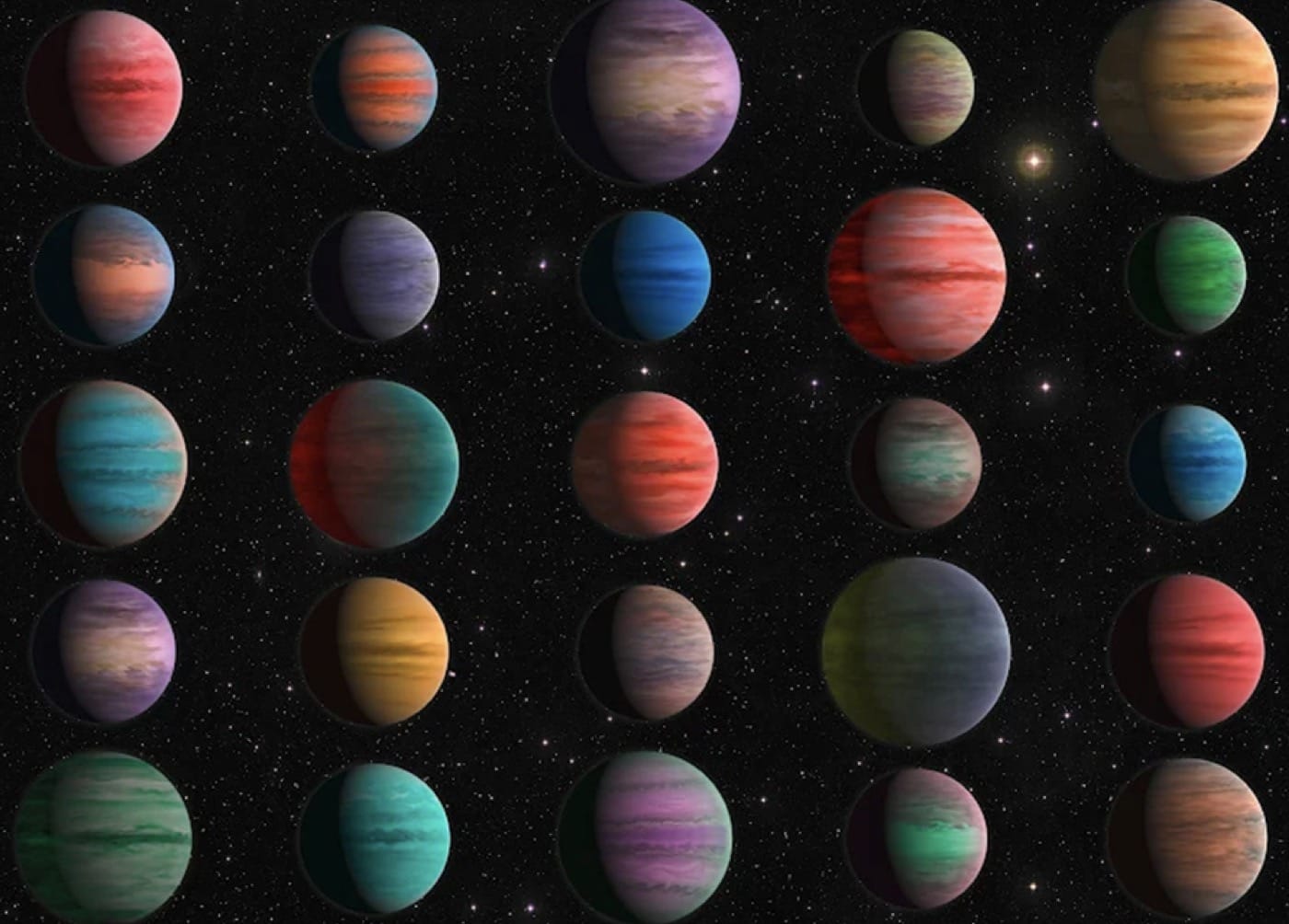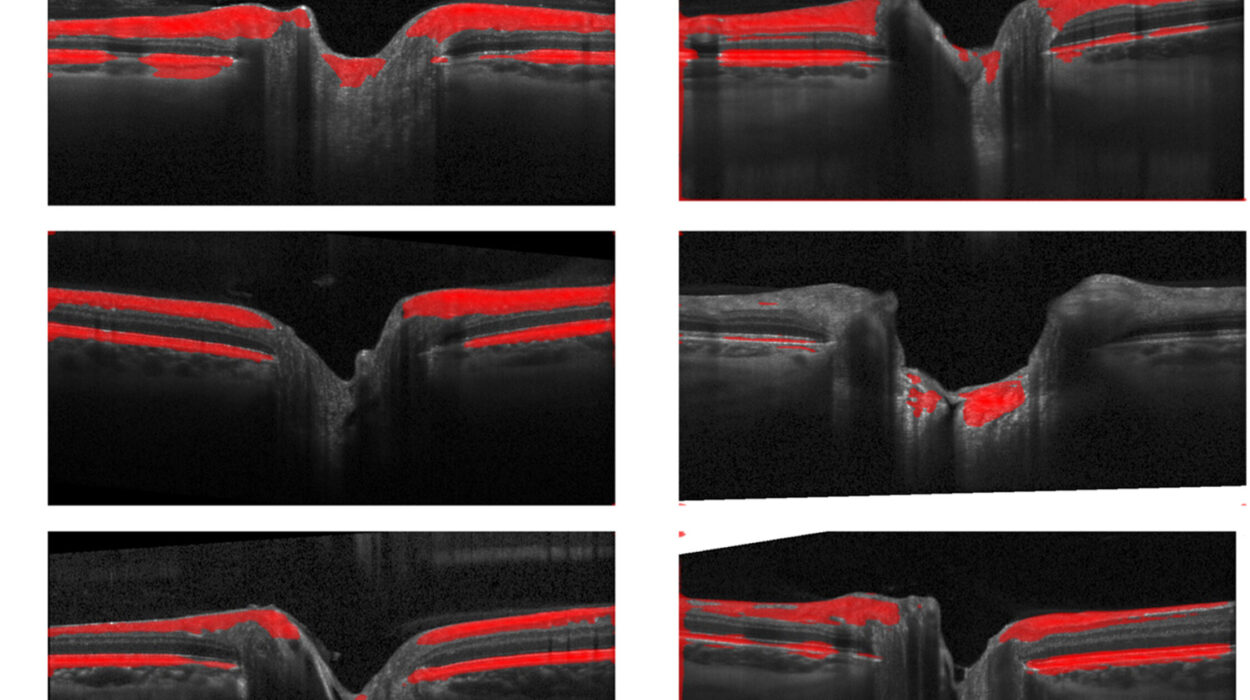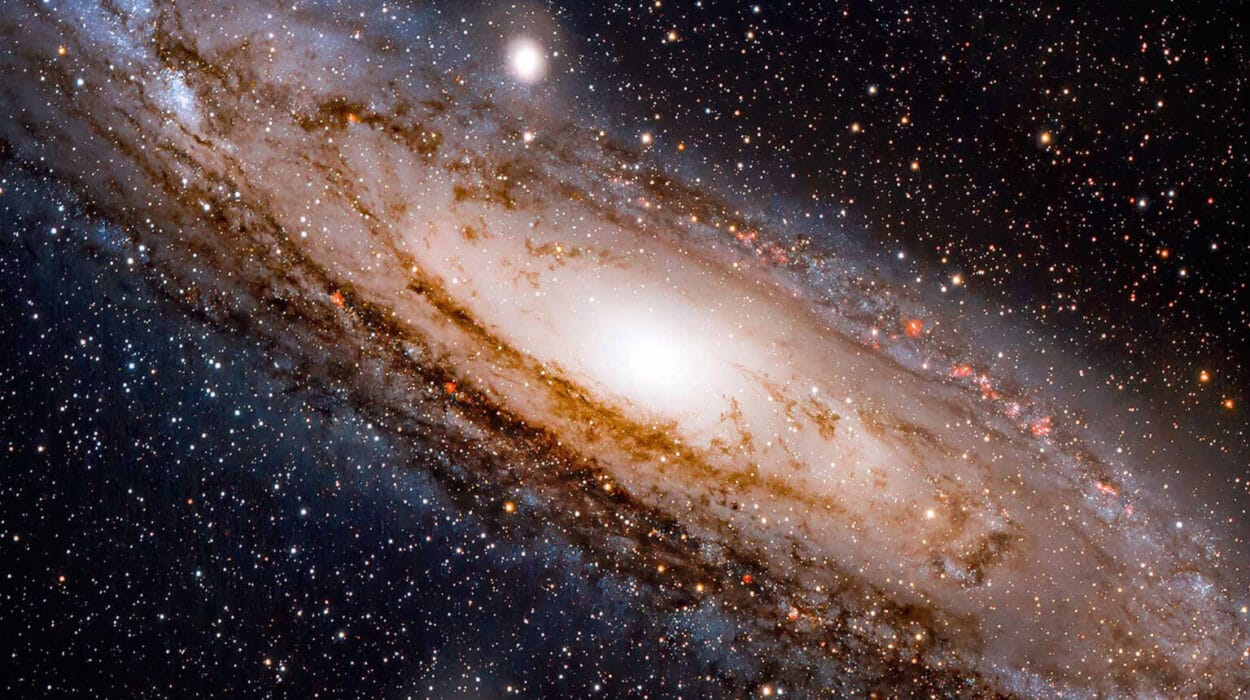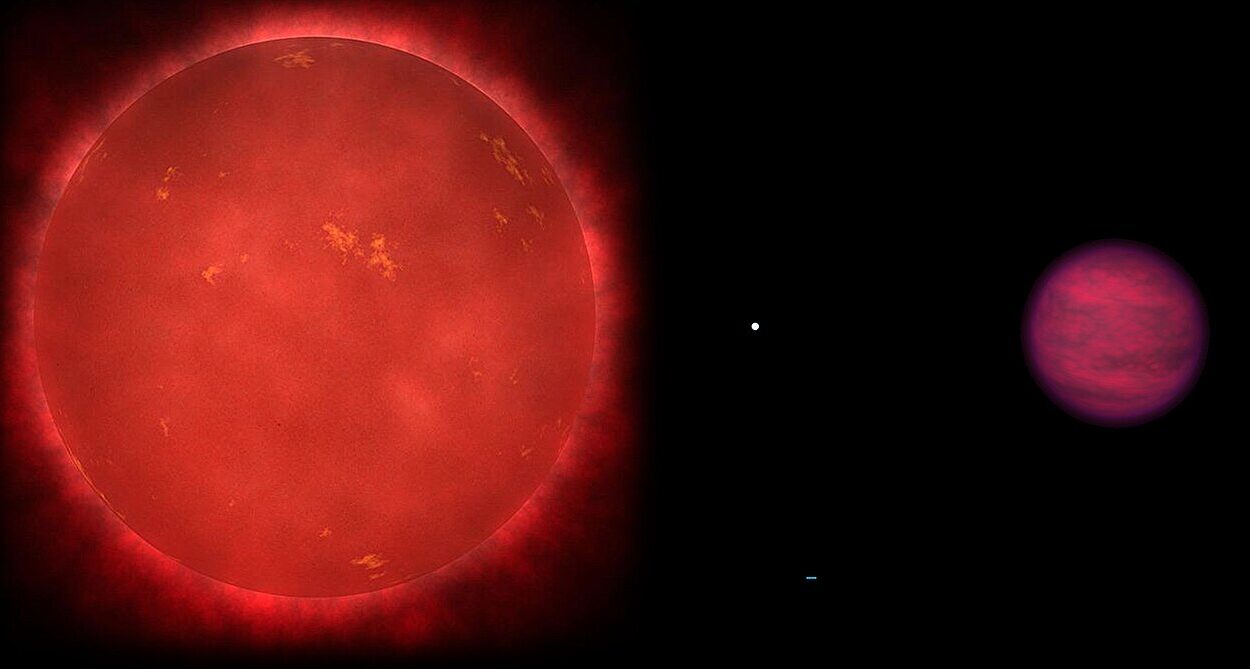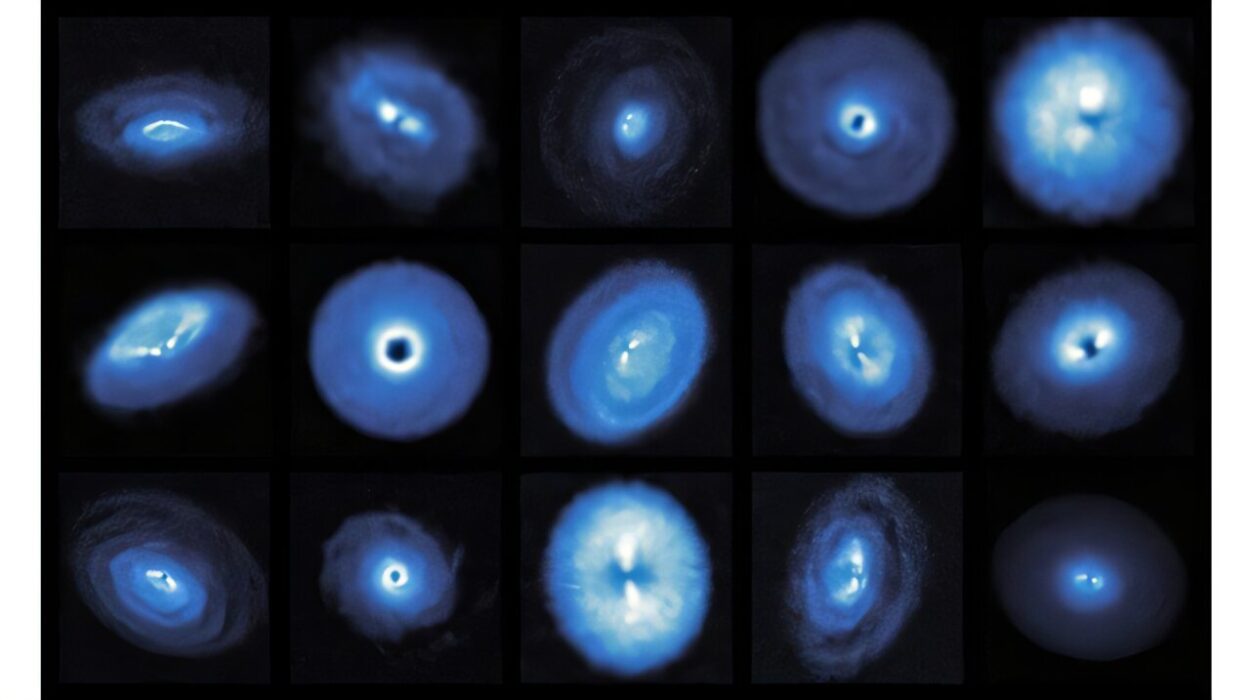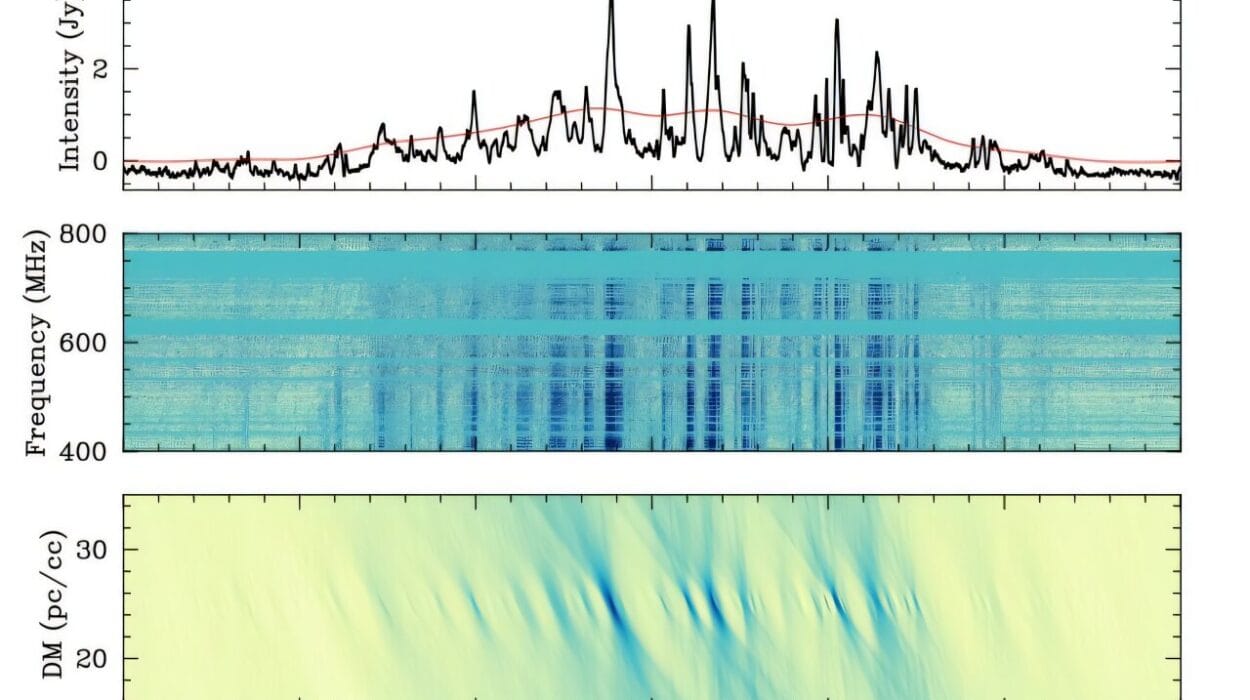In the vast darkness between stars, hidden in the glare of their suns, countless worlds are spinning—alien planets with strange atmospheres, wild orbits, and astonishing compositions. These are exoplanets: planets that lie beyond our solar system. What was once a speculative idea has now become a thriving field of scientific discovery. As of 2025, we’ve confirmed over 5,600 exoplanets, with thousands more waiting to be verified. Each new discovery pushes the boundaries of what we thought was possible.
Here are twelve of the most incredible, awe-inspiring, and mind-bending discoveries about exoplanets—each one a revelation that has rewritten the rules of astronomy.
1. The First Exoplanet Around a Sun-like Star Shocked the Scientific World
In 1995, a groundbreaking discovery shook astronomy to its core. Swiss astronomers Michel Mayor and Didier Queloz announced the discovery of 51 Pegasi b, the first confirmed exoplanet orbiting a Sun-like star.
This planet wasn’t anything like Earth.
It was a “Hot Jupiter”—a gas giant half the mass of Jupiter but orbiting its star in just 4.2 days. That meant it was blisteringly hot, extremely close to its star, and wildly unlike anything we’d seen in our own solar system. Before this, astronomers believed that giant planets could only exist far from their stars, like Jupiter and Saturn.
But 51 Pegasi b defied those models.
Its discovery rewrote our understanding of how planetary systems form and evolve. It showed that the universe isn’t constrained by the structure of our own backyard. This world, likely tidally locked and subject to searing radiation, marked the beginning of the exoplanet era—and earned Mayor and Queloz the 2019 Nobel Prize in Physics.
2. Rogue Planets Roam the Galaxy Without Suns
Not all planets need a star.
Astronomers have found rogue planets—massive worlds drifting alone through interstellar space. One such object, CFBDSIR 2149-0403, lies just 100 light-years from Earth. It’s a gas giant about four to seven times the mass of Jupiter, floating freely without a parent star.
How do such worlds exist?
Rogue planets are thought to form like regular planets, but then get ejected from their solar systems due to gravitational interactions. Others may form from collapsing gas clouds, like stars, but lack the mass to ignite nuclear fusion.
Some estimates suggest there could be billions of rogue planets in our galaxy—perhaps even more than stars.
These lonely wanderers challenge our definition of what a planet is. They also raise tantalizing questions: Could some be habitable, warmed internally by radioactive decay or tidal forces? Could life exist in eternal night?
3. Super-Earths and Mini-Neptunes: The Planet Types We Don’t Have
Earth is just one type of planet, but it turns out the most common types of planets in the galaxy are ones we don’t even have in our solar system.
Astronomers have discovered an abundance of Super-Earths (rocky planets larger than Earth but smaller than Neptune) and Mini-Neptunes (gas or ice-rich planets smaller than Neptune but larger than Earth). These two classes dominate the exoplanet population, often orbiting close to their stars.
Examples include:
- Kepler-10c, once dubbed the “Mega-Earth,” is 17 times the mass of Earth but likely has a rocky surface.
- GJ 1214b is a Mini-Neptune that may have a deep, steamy water atmosphere.
These planetary classes exist in a mysterious radius gap between about 1.5 and 2 Earth radii—suggesting that some planets lose their atmospheres while others hold on. Scientists believe photoevaporation (where radiation from a star strips away a planet’s atmosphere) may be responsible.
Understanding these exotic worlds could help answer how Earth-sized planets form, and why our solar system lacks such common planetary types.
4. The Most Earth-like Planet Yet: Kepler-452b
One of the most celebrated discoveries came in 2015, when NASA’s Kepler mission announced the detection of Kepler-452b. Orbiting a star remarkably similar to our Sun, this exoplanet is roughly 60% larger than Earth, placing it in the Super-Earth category.
More astonishingly, Kepler-452b orbits within its star’s habitable zone—the region where liquid water could exist on its surface.
This raised the possibility that it could have oceans, an atmosphere, or even life. Though we can’t yet observe its surface directly, its size, orbit, and star make it one of the most Earth-like planets ever discovered.
Kepler-452b helped crystallize our search for Earth 2.0—a planet that could potentially harbor life, or one that mirrors our own evolutionary journey.
5. Kepler-186f: A Rocky Planet in the Habitable Zone
In 2014, scientists found a world that turned science fiction into science fact: Kepler-186f, the first Earth-sized planet in the habitable zone of another star.
Orbiting a red dwarf about 500 light-years from Earth, Kepler-186f is only 10% larger than Earth. This makes it an exciting candidate for surface habitability.
Though its star is cooler and redder than our Sun, Kepler-186f receives enough stellar energy to keep temperatures potentially within the range for liquid water—depending on its atmosphere.
This discovery answered a burning question: Can small, rocky planets orbiting distant stars exist in just the right place to support life? The answer, overwhelmingly, is yes.
6. Exoplanets with Strange Orbits Defy Expectations
In our solar system, planets orbit the Sun in relatively flat, circular paths. But out there, things are far more chaotic.
Many exoplanets follow highly elliptical orbits, while others are tilted or even retrograde, orbiting their stars in the opposite direction of the star’s spin.
One of the most shocking discoveries was WASP-17b, a hot Jupiter that orbits backwards. Its retrograde orbit suggests a violent past—perhaps a near-collision or gravitational tug-of-war with another planet.
These bizarre orbits suggest planetary systems can be born in turbulent environments, with gravitational interactions and migrations shaping their final architectures. The solar system’s calm and orderly structure may be the exception, not the rule.
7. HD 189733b: A Hellish Blue World with Glass Rain
Not all exoplanets are candidate Edens. Some are nightmarish beyond imagination.
HD 189733b is a gas giant about 64 light-years from Earth. When astronomers measured its atmosphere using the Hubble Space Telescope, they discovered a planet that’s beautiful and deadly.
This world has a deep blue color, not from oceans, but from silicate particles in its atmosphere—tiny shards of glass. Winds howl at 4,000 miles per hour, and the temperature exceeds 1,700°F (930°C).
Most disturbingly, it likely rains molten glass sideways, driven by supersonic winds.
This world serves as a chilling reminder: beauty in space does not imply comfort.
8. TRAPPIST-1 System: Seven Earth-sized Planets, Three in the Habitable Zone
In 2017, the world was stunned by the discovery of seven Earth-sized planets orbiting a single star, TRAPPIST-1, a red dwarf about 40 light-years away.
Three of these planets—TRAPPIST-1e, f, and g—lie within the star’s habitable zone.
This system is compact; all seven planets could fit inside Mercury’s orbit. Yet they are remarkably stable, and their transits allow us to study their masses, atmospheres, and compositions in detail.
The TRAPPIST-1 system is one of the best laboratories for studying potentially habitable planets. With the James Webb Space Telescope (JWST) now turning its eyes to these worlds, the chance of detecting biosignatures—signs of life—is real.
9. Water Worlds and Ocean Planets Could Be Common
Some exoplanets may not have land at all.
Scientists now believe that many exoplanets, especially those slightly larger than Earth, could be water worlds—planets covered entirely by global oceans hundreds of kilometers deep.
One such candidate is Kepler-22b, a planet about 2.4 times the size of Earth in the habitable zone. Though we don’t yet know its exact composition, it could potentially support an ocean environment.
Others, like TOI-1452b, discovered in 2022, appear to be made of up to 30% water by mass—compared to Earth’s 0.02%.
These deep oceans might harbor life in forms we can barely imagine, possibly beneath thick layers of ice, warmed by internal heat.
10. Atmospheric Analysis Reveals Alien Weather
One of the greatest leaps in exoplanet science has been the ability to analyze alien atmospheres.
Using spectroscopy during transits—when a planet passes in front of its star—astronomers can detect the chemical fingerprints of atmospheric gases.
We’ve found:
- Sodium in the atmosphere of HD 209458b
- Water vapor on WASP-39b and HAT-P-11b
- Carbon dioxide detected by JWST in 2022
These discoveries don’t just tell us about temperature and weather. They’re crucial in the search for life. Future telescopes could detect biosignatures—like oxygen, methane, or ozone—that might hint at living processes.
It’s the first step toward the most profound discovery of all: life beyond Earth.
11. Exomoons May Be Waiting to Be Found
While we’ve discovered thousands of exoplanets, the hunt for exomoons—moons orbiting those planets—is just beginning.
In 2017, scientists found tantalizing evidence for a possible Neptune-sized exomoon orbiting Kepler-1625b. Though not confirmed, it’s the first serious candidate.
Exomoons matter. Earth’s moon stabilizes our climate and affects tides. Jupiter’s moon Europa and Saturn’s Enceladus are prime candidates for life. Finding moons around exoplanets could dramatically expand the places where life might evolve.
Astronomers believe that most large exoplanets should have moons, but they’re hard to detect due to their small size. As techniques improve, we may soon find a whole new class of celestial companions.
12. Earth May Be Rare… But Not Alone
All these discoveries lead to a question at the heart of human curiosity: Are we alone?
While Earth-like planets seem common, a truly Earth-like world—a rocky planet, with liquid water, a stable atmosphere, a protective magnetic field, and just the right chemical balance—might still be rare.
But “rare” is relative in a galaxy of 400 billion stars.
Even if only 0.1% of stars have an Earth twin, that’s 400 million Earth-like planets.
The universe may not be teeming with life, but it may be humming with it. And thanks to the discoveries of the past three decades, we’re no longer looking up at the stars with only imagination—we’re looking with instruments, data, and a growing sense of awe.
Conclusion: A Universe of Possibilities
Exoplanets have transformed our place in the cosmos. What once seemed unique—our Earth, our solar system—is now part of a vast, diverse landscape of planetary systems. We’ve discovered worlds that defy physics, planets with no suns, and stars with entire families of Earth-sized companions.
The next decade will be even more revolutionary. With the James Webb Space Telescope and future missions like the Nancy Grace Roman Space Telescope and LUVOIR, we may soon find the first signs of life on another world.
We are standing on the edge of the greatest discovery in human history. And it all started with a single, hot Jupiter.
